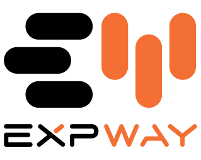Expway demonstrates live streaming over LTE at Vodafone Innovation event
Tuesday, October 31st, 2017
Vodafone and Expway Demonstrate Flawless Live Streaming over LTE
- Fixed Wireless and Mobile networks operators profit from new business model by quenching consumers’ insatiable thirst for OTT live TV
DÜSSELDORF, Germany — Expway, the LTE Broadcast industry experts and leader, successfully demonstrated sustained, high-quality fixed TV services at the Vodafone Innovation days on October 24th and 25th, 2017. The showcase proved that operators can now easily add uninterrupted TV – even during peak-times – to their traditional fixed wireless or mobile LTE services, to quickly adapt to consumers’ new viewing habits.
Consumers are increasingly watching more live TV on their mobile devices. According to a recent eMarketer study, adults spend over 2 hours per day watching Live TV programs on their mobile devices. Almost half of adults between the ages of 22 and 45 no longer watch traditional TV anymore, according to a study by Hearts & Science.
“Consumers spend almost twice as much time watching TV and Live Streaming on their mobile devices than on regular TVs” said Claude Seyrat, Expway co-founder and CMO. “Operators need to enable their LTE networks for such services to yield the best possible profits, or OTT players will continue to overload the networks while absorbing their potential revenue on this segment.”
During the Vodafone demo, Expway’s Multicast server was used to broadcast TV programs over a fixed and mobile network. The content was received by a variety of smart phones, tablets and set-top boxes from various manufacturers fitted with the Expway Middleware. All devices could independently switch between TV programs with no interruptions, and perfect HD quality.
With Expway, operators can now leverage their existing 4G and future 5G network infrastructures to provide flawless and scalable TV and Live Video services to hybrid receivers. Expway also allows the most popular TV programs to automatically switch from unicast to broadcast saving up to 80% of bandwidth, and resulting in considerable CAPEX and OPEX savings.
Latest News
- Barb to start reporting TV-set viewing of YouTube channels
- SAT FILM selects multi-DRM from CryptoGuard
- Qvest and ARABSAT to launch OTT streaming platform
- ArabyAds & LG Ad Solutions partner with TVekstra in Turkey
- Freeview NZ satellite TV service to move to Koreasat 6
- Comscore expands YouTube CTV measurement internationally
